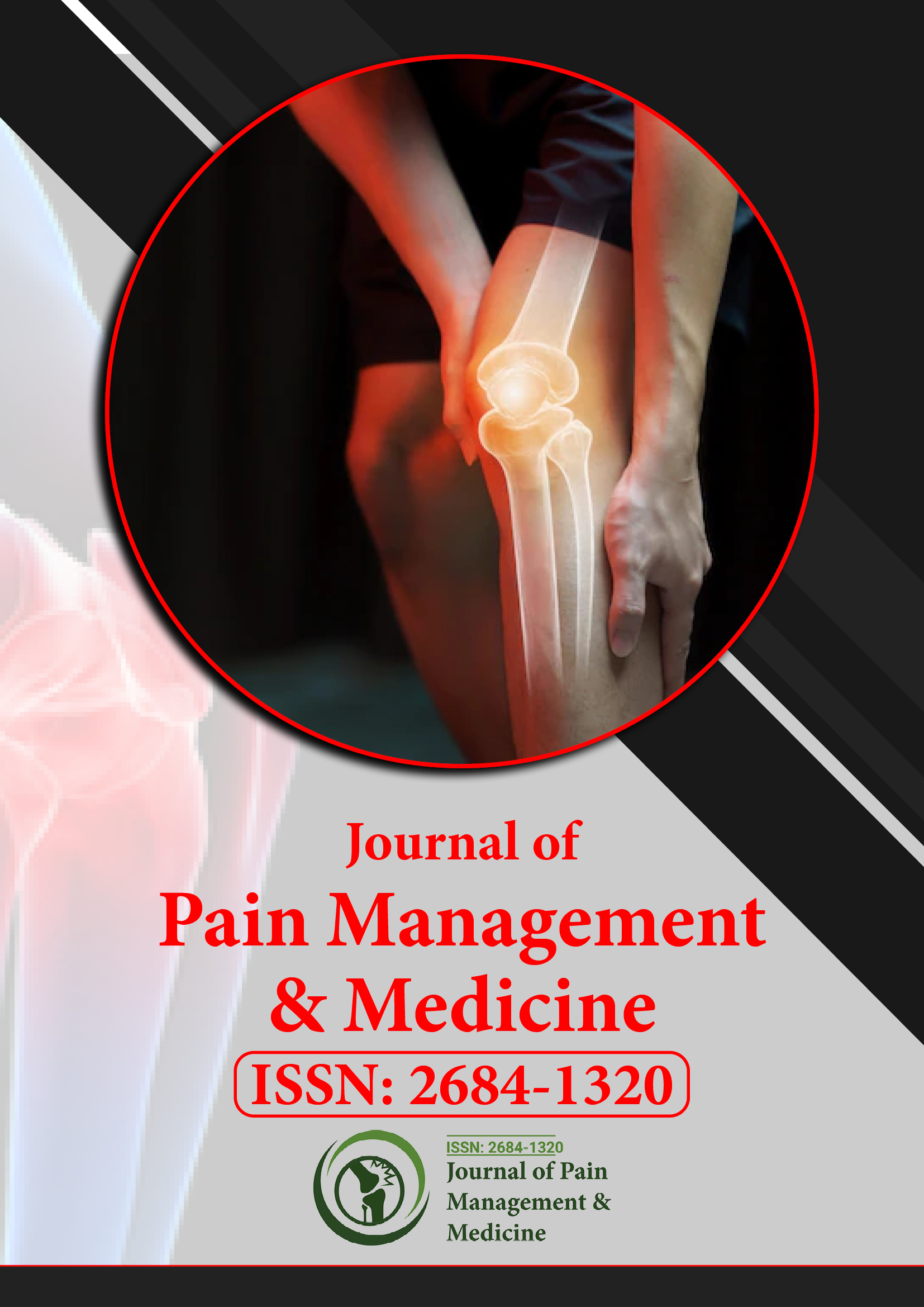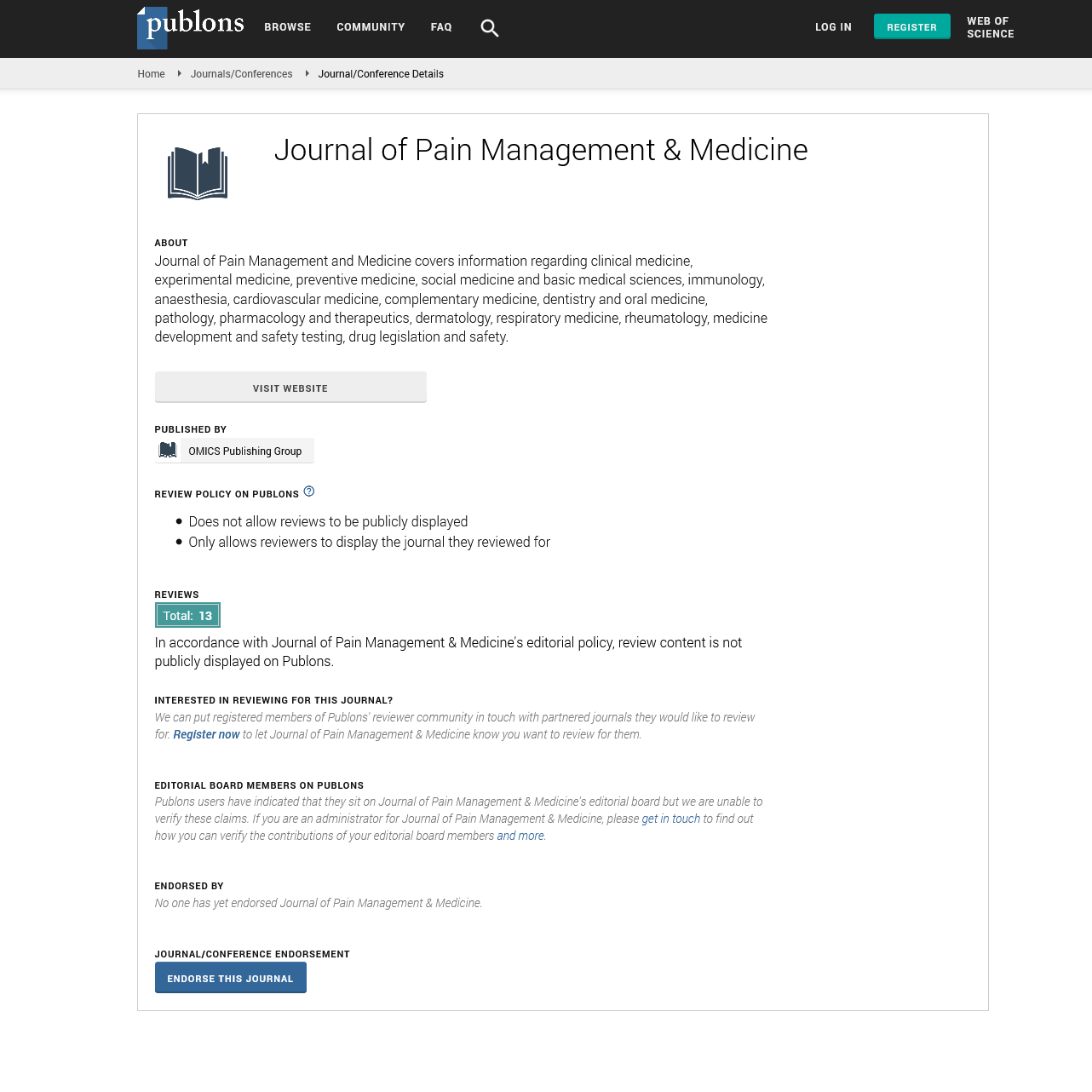Indexed In
- RefSeek
- Hamdard University
- EBSCO A-Z
- Publons
- Euro Pub
- Google Scholar
- Quality Open Access Market
Useful Links
Share This Page
Journal Flyer

Open Access Journals
- Agri and Aquaculture
- Biochemistry
- Bioinformatics & Systems Biology
- Business & Management
- Chemistry
- Clinical Sciences
- Engineering
- Food & Nutrition
- General Science
- Genetics & Molecular Biology
- Immunology & Microbiology
- Medical Sciences
- Neuroscience & Psychology
- Nursing & Health Care
- Pharmaceutical Sciences
Opinion Article - (2024) Volume 10, Issue 6
Pain Management: Innovations, Techniques and Future Directions
Abera Sertsu*Received: 28-Oct-2024, Manuscript No. JPMME-24-27637; Editor assigned: 30-Oct-2024, Pre QC No. JPMME-24-27637 (PQ); Reviewed: 13-Nov-2024, QC No. JPMME-24-27637; Revised: 20-Nov-2024, Manuscript No. JPMME-24-27637 (R); Published: 29-Nov-2024, DOI: 10.35248/2684-1320.24.10.301
Description
Pain, an inevitable part of human existence, can range from mild discomfort to debilitating distress. It acts as a sign for actual damage. However, when pain becomes chronic, it reduces its preventive function and can have significant effects on the quality of life. Therefore, effective pain management is essential for restoring functionality and well-being. Pain is a complicated experience that depends on biological, psychological and social variables. The International Association for the Study of Pain (IASP) defines pain as "A difficult psychological and physical sensation associated with an actual or potential tissue injury". Pain can be categorized into two types: Acute and chronic. Acute pain is typically temporary it arises from injury, surgery or illness. It can lead to physical and emotional suffering, significantly impairing daily activities. Managing pain effectively requires a multidimensional technique, specific to the individual's condition and needs.
Psychological techniques to pain management
The relationship between the mind and the body affects how people experience and manage with pain. Psychological techniques can enhance traditional treatments, particularly for chronic pain. Cognitive Behavioral Therapy (CBT) helps individuals identify and modify negative thought patterns and behaviors associated with pain. It provides cognitive methods such as relaxation techniques to alleviate pain-related anxiety. Mindfulness and meditation practices include mindfulness meditation focus on developing an impartial awareness of this particular moment. These techniques have been shown to decrease pain perception by altering the brain's response to pain signals.
Biofeedback technique uses electronic devices to provide realtime feedback about physiological functions such as heart rate or muscle tension. Individuals can reduce pain and stress by developing abilities to regulate these functions. Complementary and Alternative Medicine (CAM) techniques are increasing in popularity for their holistic focus and minimal side effects. Acupuncture is an ancient Chinese treatment in which small needles are inserted into specific spots on the body to stimulate natural pain-relieving mechanisms.
Chiropractic care focused on spinal alignment, chiropractic adjustments can relieve musculoskeletal pain, particularly back and neck pain. Natural treatments including turmeric, ginger and the bark of willow have anti-inflammatory and analgesic characteristics. However, they should be used carefully and under medical surveillance to avoid interactions with other medications.
Emerging innovations in pain management
Advances in science and technology are revolutionizing the field of pain management, providing new relief for individuals with chronic and refractory pain. Neuro-modulation techniques, such as spinal cord stimulation and deep brain stimulation, use electrical impulses to modify pain signaling pathways. These methods are particularly effective for conditions such as neuropathic pain and failed back surgery syndrome. Gene therapy holds the potential to treat pain at its source by targeting specific genes involved in pain signaling. While still in experimental stages, it represents a potential path for future treatments.
Personalized medicine advances in genomics and pharmacology are enabling personalized therapies based on an individual’s genetic composition. This method minimizes side effects and maximizes efficacy by matching therapies to the patient's individual characteristics. Virtual Reality (VR) is emerging as a non-invasive tool for pain management.
Barriers to effective pain management
Considering the availability of various techniques, some limitations may prevent effective pain management. Chronic pain patients experience critical thinking, which causes difficulties in diagnosis and treatment. Additionally, the stigma surrounding opioid use can prevent patients from accessing necessary medications. Education and awareness both patients and healthcare practitioners can have no fundamental awareness of pain treatment options, resulting in ineffective care. The opioid epidemic has highlighted the risks associated with prescribing excessively. It is difficult to establish a balance between pain management and addiction prevention.
Citation: Sertsu A (2024). Pain Management: Innovations, Techniques and Future Directions. J Pain Manage Med.10:301.
Copyright: © 2024 Sertsu A. This is an open access article distributed under the terms of the Creative Commons Attribution License, which permits unrestricted use, distribution and reproduction in any medium, provided the original author and source are credited.

